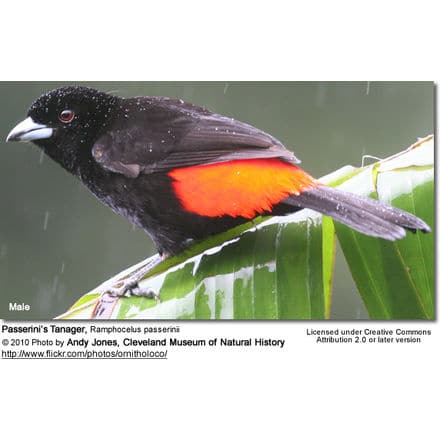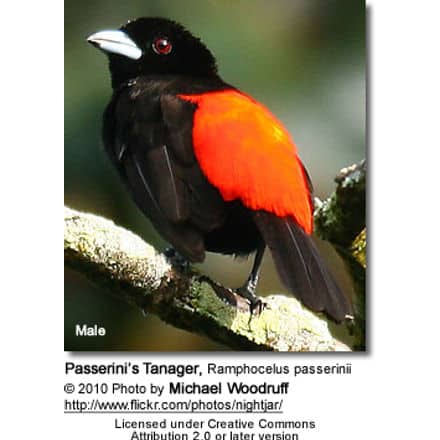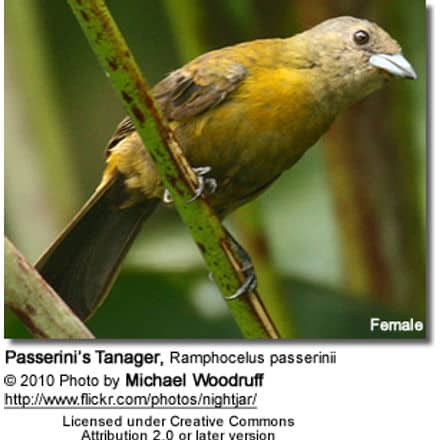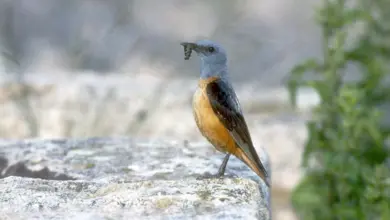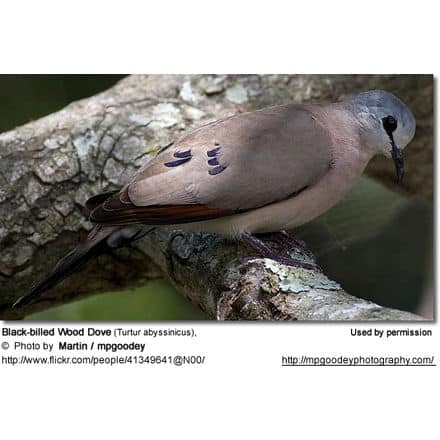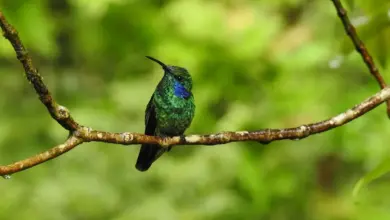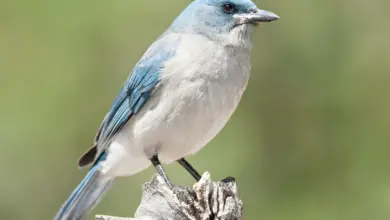Passerini’s Tanagers (Ramphocelus passerinii)
The Passerini’s Tanagers (Ramphocelus passerinii) and the Cherrie’s Tanager (Ramphocelus costaricensis) were formerly considered one single species, known as the Scarlet-rumped Tanager.
The Scarlet-rumped Tanager was split into Passerini’s Tanager on the Caribbean side and Cherrie’s Tanager on the Pacific side of Costa Rica and Panama.
These two sub-species differ mainly in some subtle colorations of the female.
The Passerini’s Tanagers was named for Carlo Passerini, a professor at the Museum of Zoology of the University of Florence.
Description
The Passerini’s Tanager averages 16 cm or 6.5 inches in length and weighs around 31g.
The adult male is mainly black except for the red rump, silvery / pale blue bill with dark tip, and dark red irises.
The female has a yellowish or brownish olive plumage turning brighter and paler on the rump (orangish-yellow); she has a grey head and throat, brownish wings and tail, and ochre underparts. The female plumage is the one that differs most from Cherrie’s Tanager, whose chest and rump are more orange.
Immatures have an orange tint to the underparts and rump, and look like a paler and duller female Cherrie’s Tanager.
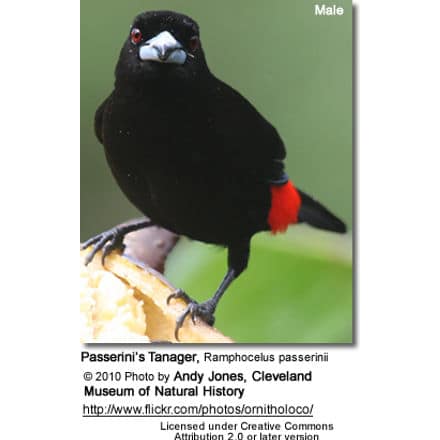

Distribution and Habitat
The Passerini’s Tanager is endemic in the Caribbean lowlands from southern Mexico to western Panama.
They are found on the low and middle elevations (1200 m up to 1700 m altitude), usually seeking out trees, thickets, shrubs in more open habitats such as forest edges, pastures with bushes and gardens.
They are usually seen in pairs, small groups, or as part of a mixed-species feeding flock. At night, up to a dozen of them can often be seen roosting roost together in dense thickets.
Nesting / Breeding
They build cup nests up to 6 m high in trees. The average clutch consists of two pale blue or grey eggs, marked with black, brown or lilac.
If the conditions are favorable, they may raise two broods in a season.
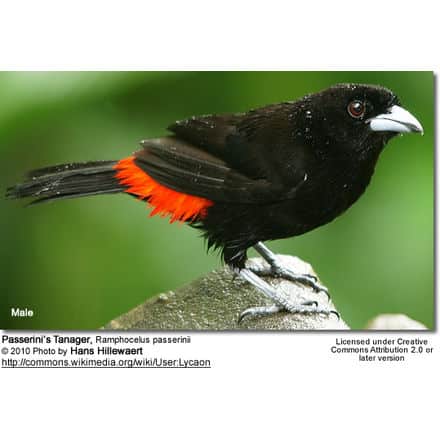
Calls / Vocalizations
The Passerini’s Tanager’s call is a sharp wac.
Its song consists of a few clear pleasant notes, delivered in shorter phrases than that of its Pacific relative.
Diet / Feeding
The Passerini’s Tanager’s main diet consists of small fruit, often swallowed whole, as well as insects and spiders.
They are often seen at favored feeding seeds in mixed-species flocks.
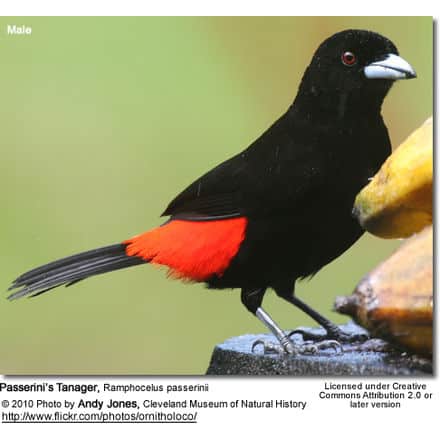
Tanager Information … Tanager Species … Tanager Species Photo Gallery
